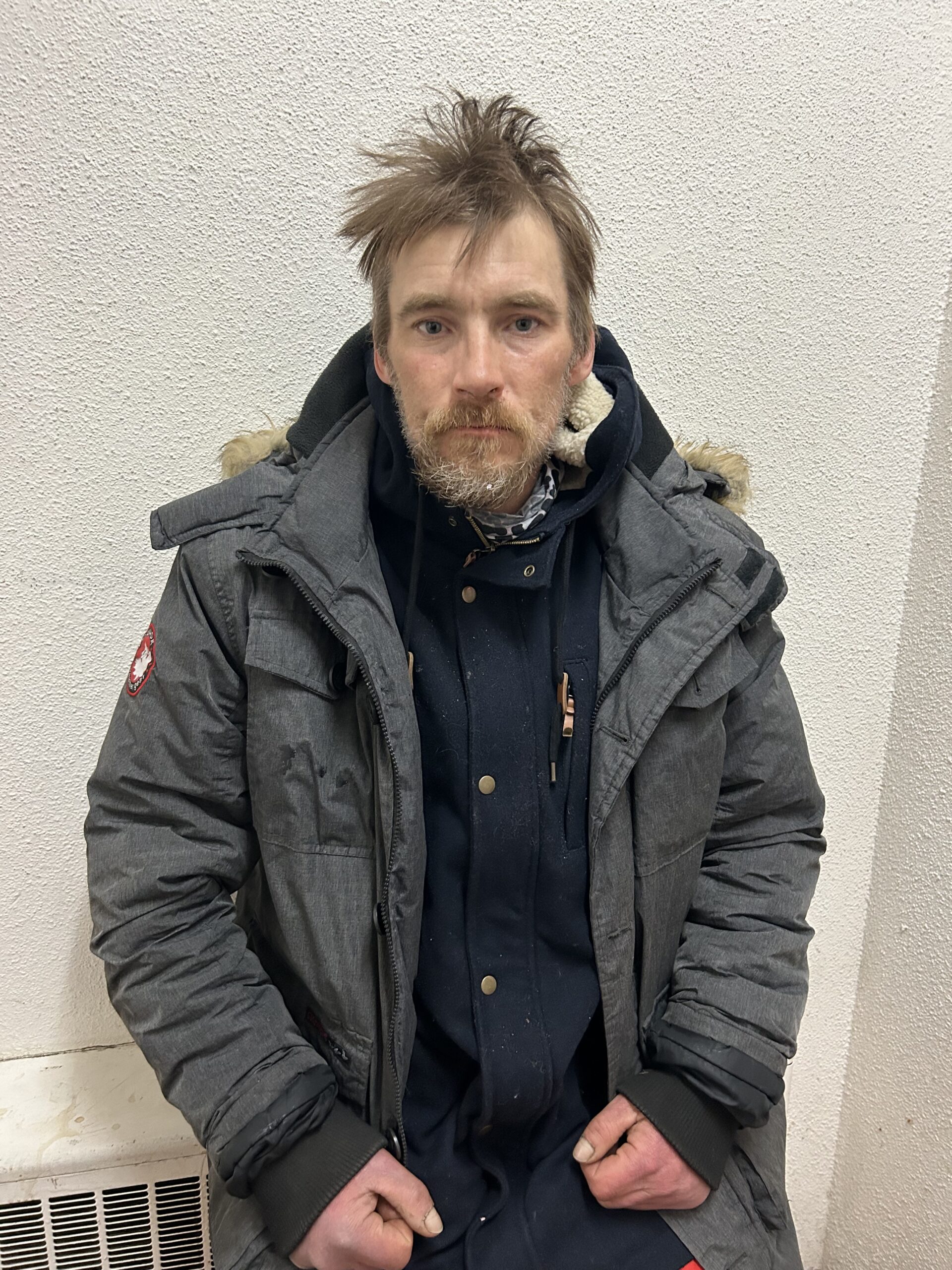
— Feature, Musings —02.20.2024 04:09 PM
My latest: no help, no hope
Belleville, Ontario, is the Friendly City. That’s Belleville’s official motto.
Belleville has about 55,000 citizens. It’s got a Kellogg’s plant, and a Proctor and Gamble plant. It’s got some beautiful views on the Bay of Quinte, on the Northern shore of Lake Ontario. It’s got a few Starbucks. It’s got a mall where a Sephora just opened. It’s got some nice old buildings downtown.
And, lately, it’s got a reputation for having one of the very worst drug problems in Canada.
Yes, yes: every city in Canada, big and small, has a drug problem these days. But a few days ago, in a 24-hour period on that Tuesday, two dozen people overdosed on a street that is within the shadow of Belleville’s City Hall. Nine of them needed hospitalization.
The situation was so bad, every available ambulance in the surrounding area was needed. Dozens of cops, paramedics and even firefighters were called in. And, mid-afternoon on that grim day, police issued an extraordinary warning, the kind you see the federal government issuing about travel to war-torn countries: stay away.
“The Belleville Police Service is advising the public to exercise caution and avoid unnecessary travel to the downtown core area following reports of a significant number of overdoses on Tuesday afternoon,” the statement read. “[There is a] need for increased vigilance and awareness in the affected areas.”
And, with that, the Friendly City became the scary city, right across Canada. It made headlines everywhere. Things got worse, too: on Thursday, with overdoses continuing to happen on and along Bridge Street, Belleville declared an actual state of emergency.
A state of emergency is what you do when things have gotten very, very bad. The province of Ontario says a state of emergency should be declared to “prevent, reduce or mitigate a danger of major proportions that could result in serious harm to persons.”
Serious harm to people: that’s what Belleville was facing. Serious harm to its citizens, who live right beside the United Church where the overdoses happened – and serious harm to the addicted and homeless people who gather there every morning for a continental breakfast and, on Sundays, a dinner. “Serious harm.”
The harm comes from not having a roof over your head, of course. The harm comes from huddling on col sidewalks with nowhere to go. The harm comes from the drugs.
Addicts in Belleville will gather together to share in a batch someone’s scored. They’ll keep some naloxone nearby, in case the opioid – always fentanyl, these days – is off. But, lately, other stuff is being added to the mix: gamma-Hydroxybutyrate, GHB, a “date rape” drug. And xylazine – tranq, or trans dope – has been showing up, too. And naloxone doesn’t really work on tranq or GHB. So, people overdose. Badly.
Neil Ellis is the smart and plain-spoken mayor of Belleville. He’s been around: a couple terms as an MP in Ottawa, and he was a junior minister for a while. And he’s fed up.
After the state of emergency was declared, Ellis got a call from the Prime Minister. He got calls with some provincial ministers. But action? Help? Not much of that.
On Tuesday afternoon, Ellis was back in front of a posse of microphones to give a bit of a State of the Union address. He wasn’t happy. And with good reason.
Ellis had asked Ottawa and Queen’s Park on help getting two things: a detox facility, and a hub where people can go and be safe. That’s it. A lot smaller price tag than an ArriveCan app that doesn’t work.
Said Ellis: “Very little progress has been made in moving forward on the crisis we are facing. There was no support for either [the detox facility or the hub]. I was told we need to formulate a mental health and addiction strategy.”
Ellis was looking pretty mad, now. “I’m not in any way disrespecting the efforts of our provincial partners…but it would be dishonest to say we were satisfied or in agreement.” The province was essentially offering a fraction of the amount needed – and not for a detox facility or a hub.
The cabinet minister who represents the area is Todd Smith, the minister of energy. He’s regarded as a good guy. Effective.
Smith has “finally shown an interest” and “may be able to move the dial,” Ellis said. Then the mayor wrapped up with this: “Our city, our unhoused, our residents and businesses have endured a terrible set of circumstances. It has thrust us into national headlines.”
“It’s time for the province to step up,” he said, but now he wasn’t just talking about Belleville, the Friendly City. “Take responsibility, and act, on the crisis that is in front of every community.”
Will Ottawa and the province, and frankly all of the provinces, do so?
Belleville – like most other cities in Canada – can’t wait much longer.


Listened to a podcast about this today. A lot of talk about meetings with important people and how great the meetings were…. and then… sigh…. meetings about more meetings and more talkity talk talk talk talkaroo.
I think the solution is to build. Build, build, build zero / low income homes at a frantic pace that Canada has never seen before.
The second part is to have a serious cool off period with non-emergency immigration. We all want to help the world, that is 100% part of the Canadian identity…. But the fact is *our house is on fire*, in a way that is only comparable to the great depression. We need to get our house in order or we are a help to no one.
Safe Injection Sites need to demonstrate that they are indeed steering people towards recovery. 5%-10% going into a program is not enough. Safe injection sites are an important part of the solution, but they are intended to be a stop gap, not a way of life.
Lastly, we need to slam the drug dealers / pushers etc… they need to receive the same sentence on par with attempted murder / manslaughter.
Safe injection sites are plenty effective – if the only goal is reducing deaths among addicts, and absolutely no other consequences are of concern.
We need to approach the problem from both ends. Yes, there needs to be far more investment on treatments and mental health supports and housing and proactive education for the young. But there also needs to be a frank understanding that, when people are putting themselves and others in harm’s way due to addiction or severe mental illness, it’s not helping anyone to just “let them be.” Get them off the street and into a proper support program. Mandate if if you have to. Stop making excuses.
Jason,
Agreed, absolutely.
Jason, I would say that safe injection sites delay deaths among addicts, but they do not reduce them. Dig into the stats, they are quite damning.
Furthermore, addicts pick up dillies from these sites and sell them to dealers to get real fentanyl. The dealers turn around and sell the dillies to high school kids. This sets up the next generation of addicts.
This whole business is an outrage.
FJP / Jason / ROD – agree 100% with all you say.
Fred,
If safe injection sites are not the be all end all, then what is? We all remember how Harper was totally against them. Obviously, jail is not the solution so what is? Is it mandatory detox or something else?
ROD – I think it lies somewhere in between. Maybe 2-3 uses and then you have to be committed to recovery or something. Otherwise, as FJP says, these sites are delaying death, not preventing it. I’m 100% supportive of the concept as a stop gap, but not as a regular way of life. That’s not helping anyone.
I’m not sure what the solution is. I drank a lot of beer in university and never became an alcoholic. Some of us are just lucky we never got hooked on booze or drugs. What’s the solution? Well, I’m a nice guy, most of the time, but I think people hooked on drugs need forced treatment – no choice. Safe injection to keep them alive, and then force them into treatment with the appropriate supports when they’re done – what’s nice is that there seems to be bipartisan concern for the downtrodden, and that’s nice to see.
Curious V,
What do alcoholism, drug and sex addiction all have in common? Some kind of severely UNRESOLVED psychological trauma. I favour mandatory treatment, but unless you address the deep psychological wounding, your efforts will ultimately be in vain, when they eventually relapse and fall back into old highly damaging coping mechanism patterns.
True Ronald. Good Point.
Here’s a little story about drugs in the city I live in, one that’s indicative of the public’s feeling about drug addicts.
So I’m on the LRT making my way home and a drug addict enters the train. He sits beside another drug addict. Then, in a crowded LRT car, he proceeds to light up his crack pipe. The passengers are shocked at this, and I tell him to fuck off smoking crack. Then, the guy beside me asks me if I want to grab him and throw him off the train. Another passenger yells at him “fuck off smoking crack or I’m going to throw you in the river”.
I told the guy if he gets hurt we could get in trouble, so we can’t grab him – then I asked the crackhead to leave the train and find somewhere else to do his drugs. What a shame, he was young, well dressed, but with a face so disfigured to could tell he’s an addict before he lit up.
If this story was shocking, well that would be great. But, alas, it isn’t – it’s a regular occurrence happening across Canada every day and it’s about time we forced them into treatment and guaranteed them a permanent address when they’re done.